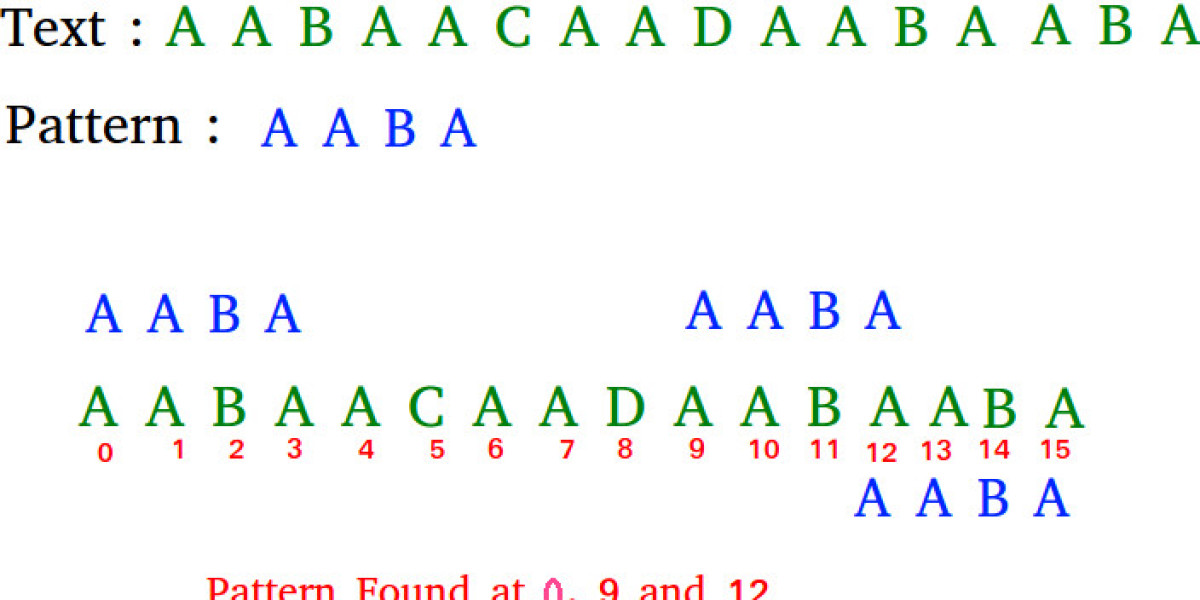In the digital age, where vast amounts of information are generated and stored every day, the need for efficient naive string-matching algorithms has become paramount. String searching is a fundamental operation in computer science, enabling us to find specific patterns or substrings within a larger text. Whether it is searching for a keyword in a search engine, matching DNA sequences in bioinformatics, or parsing through massive log files, the ability to quickly and accurately locate strings is crucial.
In this article, we delve into the world of fast and efficient string-searching algorithms. We explore various approaches and techniques that have been developed over the years to improve the speed and effectiveness of string searching. From classic algorithms like the naive approach and the Boyer-Moore algorithm to more recent advancements like the Knuth-Morris-Pratt algorithm and the Rabin-Karp algorithm, we uncover the inner workings and trade-offs of each method.
By understanding the strengths and limitations of different techniques, we can make informed decisions when selecting an algorithm for a particular problem or optimizing an existing solution.
One of the classic algorithms is the naive approach, which involves scanning the entire text character by character and checking for matches with the desired pattern. Although simple to implement, this algorithm can be highly inefficient, especially for large texts or complex patterns.
To address the limitations of the naive approach, more sophisticated algorithms have been developed. The Boyer-Moore algorithm, for example, takes advantage of a heuristic based on the last occurrence of characters in the pattern to skip unnecessary comparisons. This approach significantly reduces the number of character comparisons required, making it one of the fastest string searching algorithms in practice.
Another efficient algorithm is the Knuth-Morris-Pratt (KMP) algorithm, which utilizes a preprocessed table to avoid redundant comparisons. By analyzing the pattern itself, the KMP algorithm determines potential shifts in the search position, eliminating the need to revisit previously matched characters. This characteristic makes it particularly effective for scenarios with long patterns and overlapping occurrences.
The Rabin-Karp algorithm employs a different strategy by using hash functions to quickly compare the pattern with the substrings of the text. It computes hash values for the pattern and text windows, allowing for rapid identification of potential matches. This algorithm is especially useful when multiple patterns need to be searched simultaneously.
In recent years, advanced techniques and technologies have further enhanced the speed and efficiency of string searching algorithms. Parallel processing and multi-threading enable the distribution of the search process across multiple cores or machines, accelerating the overall search time. Additionally, hardware acceleration using specialized processors, such as graphics processing
units (GPUs), can provide significant performance improvements for certain algorithms.
There are several types of string searching algorithms, each with its own approach and characteristics. Here, we will explore three common types of string searching algorithms: brute force algorithms, indexing-based algorithms, and hashing-based algorithms.
Brute Force Algorithms:
Brute force algorithms are the simplest and most straightforward type of string searching algorithm. They involve scanning the entire text character by character and checking for matches with the desired pattern. The naive approach is an example of a brute force algorithm, where every possible shift and comparison is performed.
While brute force algorithms are easy to implement, they can be inefficient for large texts or complex patterns. The worst-case time complexity for brute force algorithms is O(n * m), where n is the length of the text and m is the length of the pattern. However, in some cases, brute force algorithms can perform well, especially when the pattern is short or the text size is relatively small.
Indexing-Based Algorithms:
Indexing-based algorithms improve the efficiency of string searching by utilizing additional data structures to speed up the process. These algorithms preprocess the pattern or the text to construct indexes that enable faster pattern matching.
The Boyer-Moore algorithm is a widely used indexing-based algorithm. It takes advantage of a heuristic based on the last occurrence of characters in the pattern to skip unnecessary comparisons. By examining the text from right to left, the algorithm can quickly determine potential shifts, reducing the number of character comparisons required.
Another indexing-based algorithm is the Knuth-Morris-Pratt (KMP) algorithm. It preprocesses the pattern to construct a partial match table, which helps determine potential shifts in the search position. The KMP algorithm avoids revisiting previously matched characters, making it particularly efficient for scenarios with long patterns and overlapping occurrences.
Hashing-Based Algorithms: Hashing-based algorithms utilize hash functions to expedite the string searching process. These algorithms compute hash values for both the pattern and text windows and use them to identify potential matches.
The Rabin-Karp algorithm is a well-known hashing-based algorithm. It uses rolling hash functions to generate hash values for the pattern and overlapping text windows. By comparing the hash values, the algorithm can quickly identify potential matches. The Rabin-Karp algorithm is particularly useful when multiple patterns need to be searched simultaneously.
Hashing-based algorithms can offer good average-case performance, but they may suffer from hash collisions, which require additional checks to ensure accurate matches. Additionally, selecting an appropriate hash function is crucial to minimize collisions and maximize performance. that these types of string searching algorithms are not mutually exclusive. In practice, hybrid a
It's important to approaches that combine different techniques may provide even better performance and adaptability, depending on the specific problem and data characteristics.
Overall, the choice of string searching algorithm depends on factors such as the size of the text, the complexity of the pattern, and the desired performance trade-offs. By understanding the strengths and weaknesses of each type, one can select the most suitable algorithm for a given scenario.
As technology continues to advance, new opportunities arise for optimizing naive string-matching algorithms. Parallel processing techniques and hardware acceleration can significantly speed up the search process, enabling faster and more efficient analysis of massive datasets. Additionally, machine learning and artificial intelligence techniques can be employed to enhance the accuracy and speed of string searching in specific domains.
In conclusion, fast and efficient string searching algorithms form the backbone of many data-intensive applications. By understanding the underlying principles and techniques, we can harness the power of these algorithms to unlock valuable insights from vast amounts of data, drive innovation in various fields, and empower the next generation of information retrieval systems.



